Winner
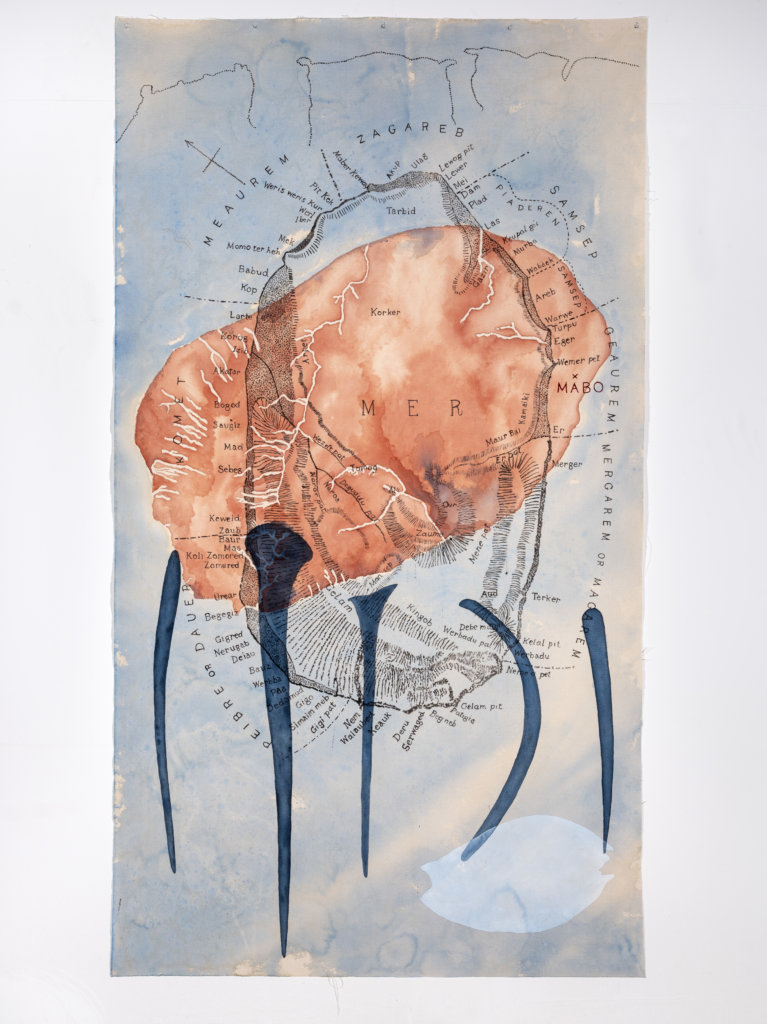
Umbrella Studio Contemporary Arts, Townsville
Legacy: Reflections on Mabo exhibition
Legacy: Reflections on Mabo is an exhibition developed by Umbrella Studio Contemporary Arts. It is Umbrella’s most extensive touring exhibition to date and was first presented in Townsville by Umbrella in 2019. It has since been touring nationally to regional venues across Australia.
The exhibition celebrates the man behind the game-changing Native Title Act, Eddie Koiki Mabo, and is co-curated by Umbrella’s previous Directors, Dr Jonathan McBurnie and Kellie Williams, together with Eddie’s daughter Gail Mabo.
The exhibition brings together a selection of 22 works by 25 Indigenous and non-Indigenous artists in the spirit of reconciliation, almost three decades after the historic achievement. Each artist responded to an aspect of Eddie Mabo that they were drawn to, whether it be his life, politics, activism, or legacy. The works come together in surprising ways with reverence, compassion, anger, sadness and respect, celebrating a man who was both a rebel and a dreamer.
Legacy: Reflections on Mabo is the first major exhibition to explore the life and legacy of Eddie Koiki Mabo from both Indigenous and non-Indigenous perspectives. It is the first to incorporate significant curatorial direction by the Mabo family, and is unique in the way that the entire show comprises commissioned artworks created specifically for this project that have never been seen before.
This exhibition’s significant reach to so many galleries in regions around Australia means that the conversation about Indigenous rights, reconciliation and wider conversations continue for people of all ages.
Finalists
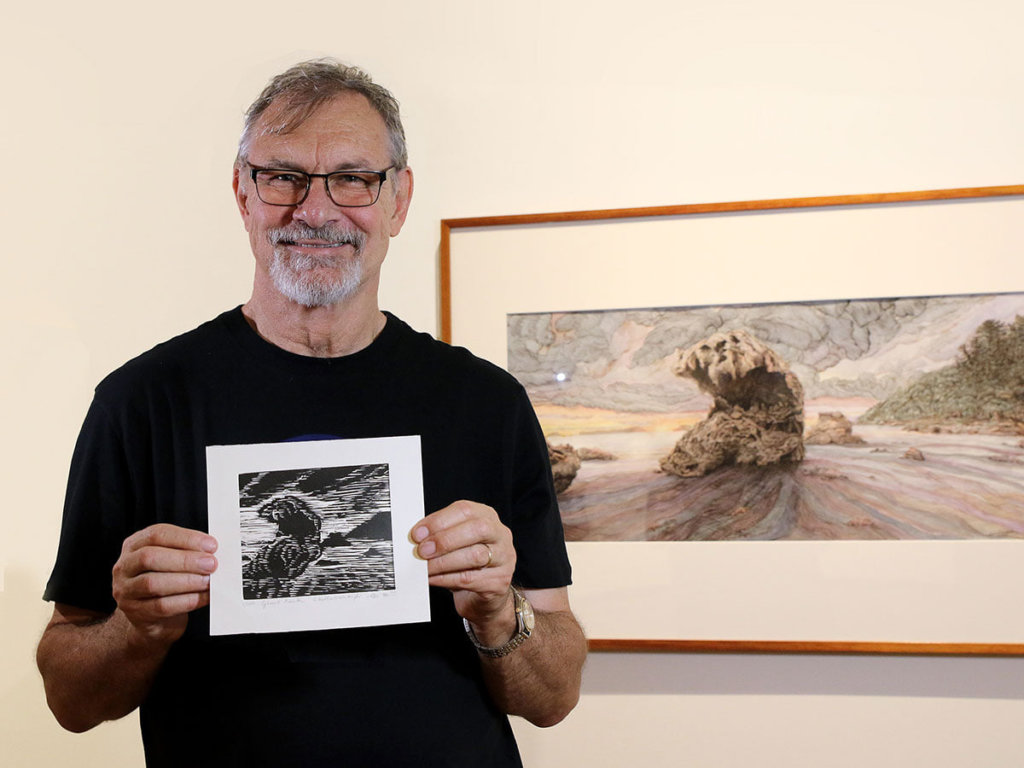
Artspace Mackay
Ron McBurnie: In Search of Arcadia artist-in-residence program
During 2019 and 2020, prominent North Queensland artist Ron McBurnie completed an extended artist residency with Artspace Mackay, capturing beloved landscapes and views of the Mackay region en plein air over several visits. In his search for landscapes to visit and to capture, Ron called upon the Mackay community to guide his quest by offering up recommendations of locations held dear. Daily Facebook posts from Ron diarised his en plein air adventures and called upon individuals to suggest more places to visit, draw and paint.
The residency was originally planned as a smaller project, however disruptions to exhibition programming brought about by COVID-19 saw the gallery pursue an opportunity to extend it to enable Ron to work towards a 2021 major show. Over a period of six one-week residencies, Ron created over 60 original works on paper for the culminating Artspace Mackay exhibition, In Search of Arcadia.
This unique program delivered many beneficial outcomes for Artspace Mackay / Mackay Regional Council and the broader community including the development of a new partnership with Mackay Tourism to create an Artists’ Trail brochure, which features Ron’s original artworks and promotes places he visited during his residency. Ron’s recorded travel throughout the Mackay region encouraged visitation to the area and to Artspace Mackay, reminding visitors about the appeal and ‘uniqueness’ of the place and providing the local community with a sense of optimism and pride in their home.
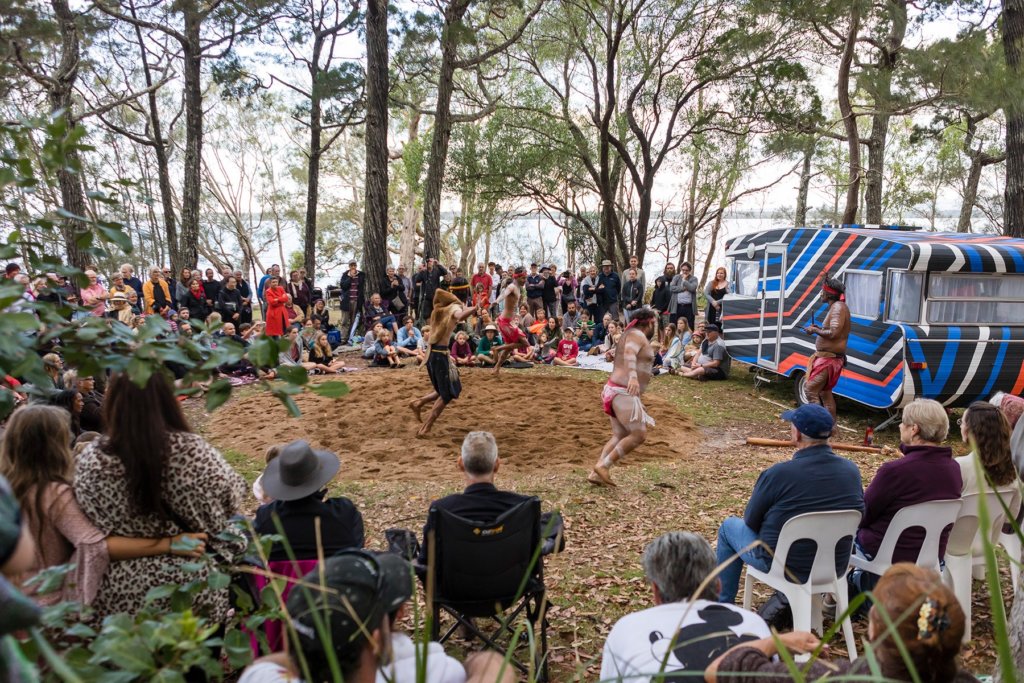
Noosa Regional Gallery
Floating Land: point to point
Floating Land embraces the vision to be Australia’s premier art in the environment event, reflecting Noosa’s reputation and identity as a community that prioritises care for the natural environment. In 2019, Floating Land: point to pointmarked the 10th iteration of the event, with 31 artists delivering 40 artistic project outcomes and 45 associated public programs, each leaving no trace on the environment at the conclusion of the event. There were two key anchor sites for 2019 Floating Land – Boreen Point and Noosa National Park – while several sites in between were also activated with stand-alone artistic projects. Visitors were invited to experience thoughtful, challenging and environmentally aware works that engage critically and sensitively with these captivating spaces.
Projects included Travelling Colony by Wiradjuri artist, Brook Andrew. Under Brook’s creative direction, three retro caravans were hand-painted in collaboration with school students and First Nations artists from across the region, reflecting Brook’s cultural heritage as well as his ongoing interest in popular culture.
Returning to Noosa 31 years after his first visit, internationally acclaimed Japanese artist, Masao Okabe accepted an invitation to take part in Floating Land with his collaborator, Chihiro Minato. Masao uses frottage to capture a record of surfaces at sites of trauma. Trees to Trees, his project for Floating Land, brought together impressions from trees in Hiroshima alongside those from trees impacted by the Peregian Beach bushfires.
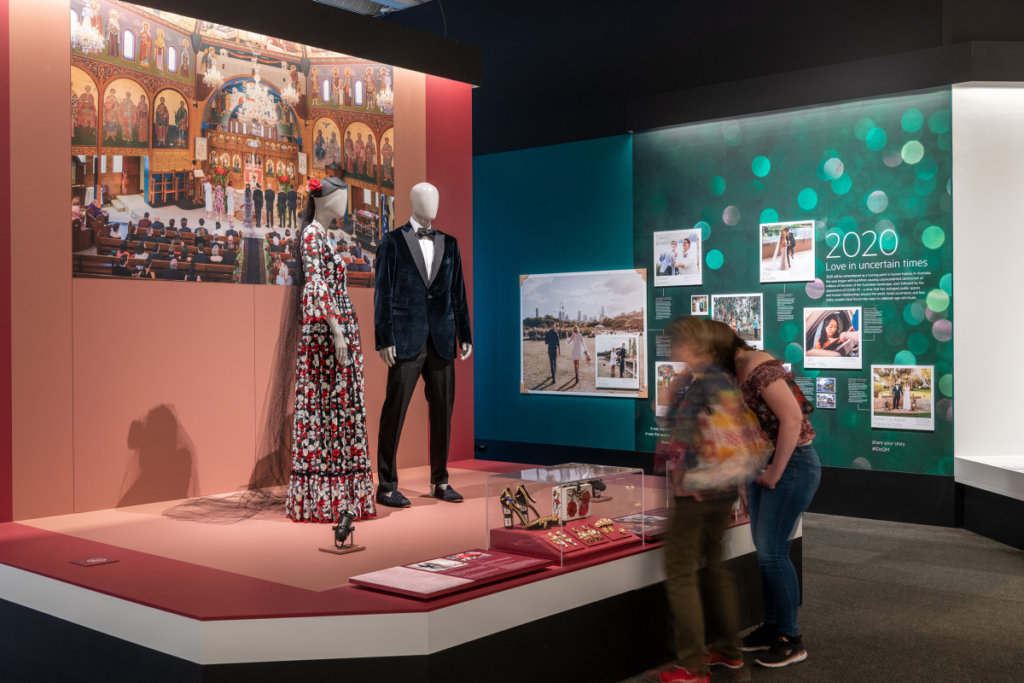
Queensland Museum
I Do! Wedding Stories from Queensland
I Do! Wedding stories from Queensland was a temporary social history exhibition held at Queensland Museum from September 2020 to February 2021. The exhibition explored 180 years of changing customs and social dynamics through the wedding stories of more than 40 Queensland couples, and the display and interpretation of 174 objects including 40 wedding ensembles, photographs, letters and accessories.
The concept for I Do! Wedding stories from Queensland began as an idea to display wedding garments from QMN’s State Collection, but evolved into a survey of historical and contemporary Queensland life as QMN’s curatorial team delved into the lived experiences connected to the garments.
Cultural groups featured in the exhibition included Chinese, Hmong, Sikh, Greek, Lebanese, Fijian and First Nations Australians, in addition to a broad range of social perspectives from women and the LGBTIQ community. The suits worn by the first same-sex couple to be married in Queensland catalysed the curatorial concept to show wedding garments as tangible artefacts of Queensland’s ever-evolving cultural landscape and the diverse communities within it.
The exhibition also led to QMN’s first ever acquisitive artwork commission from First Nations artists Simone Arnol and Bernard Singleton. The wedding dress and accessories explored the difficult and suppressed histories of arranged weddings that took place on the Yarrabah Aboriginal mission in Queensland during the 20th century.
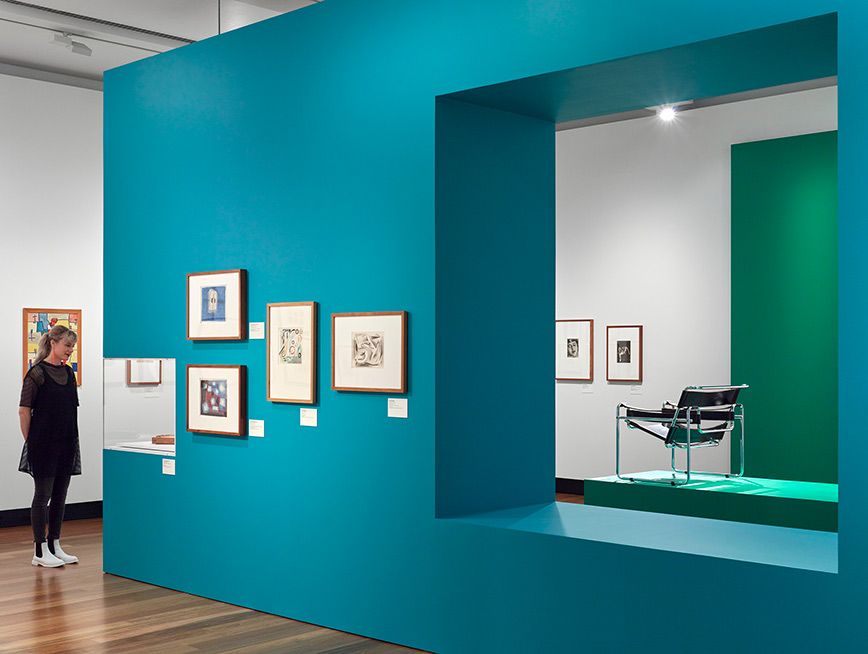
Museum of Brisbane
Bauhaus Now exhibition
Bauhaus Now: art+design+architecture: A legacy of migration and modernism was exhibited by Museum of Brisbane (MoB) from September 2020 to April 2021. It brought to life the little-known story of how revolutionary ideas of the Weimar Republic in Germany influenced modernist art, design and architecture in Brisbane and Australia. Curated by Professor Andrew McNamara, the exhibition revealed the migrant and refugee contribution to Australian life and art history in the inter-war period and post-Second World War years.
Bauhaus Now featured original artworks and films from this influential period, plus a series of vivid contemporary recreations that demonstrated the impact of this movement in Brisbane and Australian art history. The exhibition also revealed how the legacy of these powerful ideas is being re-interpreted today by the city’s contemporary artists. In total, 103 artworks and historical objects were on display plus support material, including digitised photographs and architectural plans.
Bauhaus Now achieved high standards of artistic and cultural outcomes for MoB, the arts and social history sector, and the community. MoB aims to be central to conversations about the evolving life of Brisbane, its histories and contemporary cultures, and the exploration of the Bauhaus’ legacy in Brisbane achieved the organisation’s goals, sharing a little-known story that had a big impact on Brisbane – it’s art, architecture, education and communities. The exhibition saw a high number of national loans from internationally renowned artists, including from major interstate galleries, museums and libraries, as well as artworks and social history objects from the Museum of Brisbane Collection. The display of historically significant works beside contemporary interpretations showcased the continued legacy of the Bauhaus émigrés.

